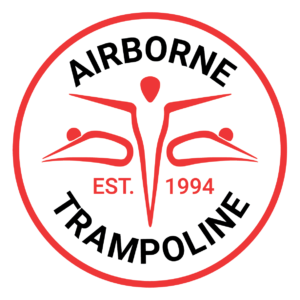Trampoline Classes – Developing A Coaching Philosophy: Part 1
One of the main goals of any coach or instructor, including coaches of Airborne’s trampoline classes, is to develop the “skills” required by the particular discipline or sport, in which the athlete is involved. These skills may range from simple to difficult and their level of difficulty (in execution) is proportionate to the amount of time the athlete engages (or has been involved) in the practice of said discipline. The context of the athlete’s general experience is absolutely important. It can be said that all behaviors exhibited within the limitations of the instructor-athlete relationship should be geared toward the technical progress of the skill set of the athlete; however, in order to successfully facilitate this progress three factors must be considered: a proper definition of “progress”, how progress is related to success, and a clear understanding of the athlete’s needs. Let us start by looking at what progress is. Progress is defined by the dictionary as the development of an individual or group in a direction considered more beneficial than, and superior to the previous level. It is important to understand that there is no specific or universal way to quantify progress; it can be as small a step as having athletes in Airborne’s recreational trampoline classes going from unbalanced bouncing to performing 10 straight bounces without leaving the center of the trampoline, to a provincial competitive trampoline athletes achieving mobility scores to national level. The implication is very simple: progress is any forward movement or improvement of the athlete in skill level. As coaches in Airborne’s Trampoline Classes, we can also consider improvement in attitude, or attitudinal shifts that are conducive to better progress – we will cover that in part 2 of this write up. Obviously, and this is where things can become blurry, the insinuation of this definition is contingent on both, the physical and psychological factors affecting the learning and development (the progress and success) of the athlete. Furthermore, it [the definition] must take into account that these factors are themselves dependent on other aspects of the athlete’s condition like their needs, potential, and expectations of the sport. So, with a clear definition of progress we can begin to define success; if an athlete’s expectation of one of trampoline classes is to perform 10 controlled bounces in the center of the bed, and they have achieved this, they can be considered successful within the context of having met their own expectations for a particular class, a week of training, or the duration of their career in the sport of trampoline. NOTE: As it pertains to success, we must understand that it is also dependent on circumstances like the physical, psychological, an emotional state of the athlete. It is the objective of an instructor to understand these circumstances and to use them toward the benefit of development and progress; however, it is also important to recognize that most if not all of these factors may be beyond the control of the instructor – it follows that consistency must be provided by the instructor in the training environment. Of all the factors affecting an athlete’s condition in training, potential is the most difficult to observe, as it is relative to the athlete’s general condition, especially, psychological/emotional tendencies. Adequate development will come from a relationship in which these factors affecting the athlete’s condition are not detriments but form part of a healthy, dynamic framework where some progress is always possible.
Exercise 1: Question and Answer.
There are many questions we should answer when considering the progress or success of our athletes. I have included two that have proven useful for me since the beginning of my coaching career. How can an instructor provide and maintain consistency to facilitate progress? Having accepted that the main role of an instructor is to develop the skills of a given discipline; can we allow anything to interfere with this goal? If yes, what?
This article was written by Peyton Dracco, a Gymnastics Ontario and N.C.C.P. Certified Coach
Follow Peyton Dracco on Twitter at @pdracco
__________________________________________________________________
For more information on Airborne’s Trampoline Classes, contact any Airborne location by jumping over to www.airbornetrampoline.ca
Airborne Trampoline
Offering Trampoline Classes at…
Airborne Trampoline Newmarket
Airborne Trampoline Woodbridge
Airborne Trampoline Mississauga
Airborne Trampoline Cambridge.

